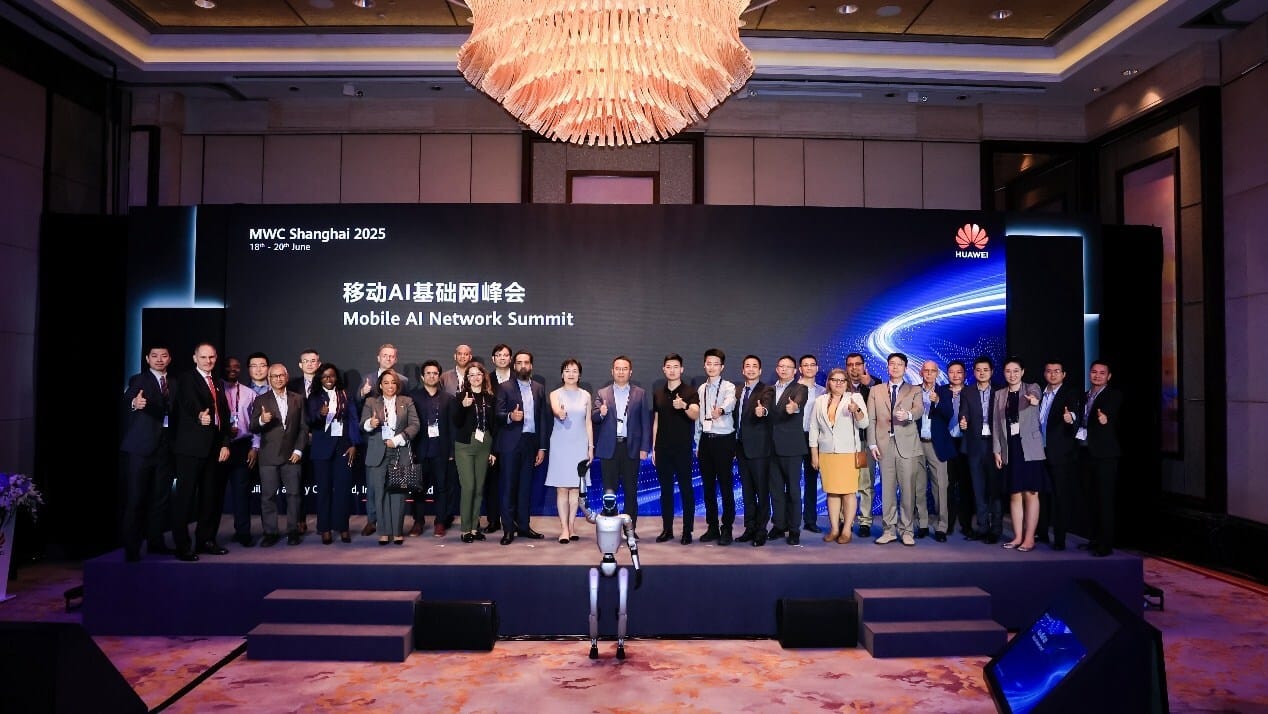The technology company brings together operators, experts, and industry leaders at MWC Shanghai 2025 to lay the foundation for an infrastructure designed to monetize the experience of mobile artificial intelligence.
In a decisive step toward the future of smart telecommunications, Huawei and a group of industry leaders have reached a key consensus on the evolution of mobile networks to accommodate mobile AI. During the Mobile AI Summit held at the Mobile World Congress Shanghai 2025, two strategic pillars were addressed: enhancing the uplink experience in 5G-Advanced networks and fostering synergy between networks and services for more efficient monetization of user experience.
The event also marked the official launch of the GSMA Foundry: Mobile Network for a Thriving AI project, underscoring the global commitment to accelerating the transition to smarter, experience-focused networks tailored to the rise of artificial intelligence in mobile devices.
Mobile AI: An Ecosystem Under Construction
Wen Ku, president of the China Communications Standards Association (CCSA), highlighted the need to integrate artificial intelligence with 5G-Advanced networks, noting that this convergence will be essential for technological leadership in the next decade. “We must prioritize common standards, smart networks, and collaborative ecosystems,” he stated.
Emerging companies such as Rokid, MiniMax, and Unitree Robotics shared their vision of how AI agents are evolving beyond the touchscreen, towards multimodal interactions that include voice, video, or even spatial computing. The goal: real-time services that require uplink speeds exceeding 20 Mbps and low latency, such as video calls with AI assistants or immersive interactive experiences.
The combination of advanced networks and more precise AI capabilities opens up new opportunities in various sectors, including entertainment, commerce, healthcare, and digital education.
Adaptive Networks and Monetization Beyond Traffic
Representatives from global operators and companies like Ookla emphasized how AI is already being applied to optimize networks, operations, and maintenance (O&M), thus facilitating a structural transformation. This evolution enables operators to shift from a model of traffic monetization to one based on differentiated experience, paving the way for new revenue sources based on service quality.
In this regard, Huawei introduced its GigaBand solution, which combines techniques such as air interface resource pooling (AIR) and the optimization solver Optsolver. This technology allows for dynamic resource allocation and orchestration tailored to different types of services, including live streaming, AI virtual assistants, or cloud gaming.
An example cited was the implementation of GigaBand in Hong Kong, which achieved a 2.28-fold increase in 5G performance while maintaining stability for 4G users. Such deployments reinforce the transition toward more efficient, intelligent, and sustainable 5G SA networks.
Mobile AI as a New Digital Economic Engine
The Summit made it clear that 5G-A, bolstered by innovations like GigaBand and cross-sector collaborative strategies, is set to become the foundational platform for a new phase of growth in the mobile industry. This phase will be characterized by intelligent, ubiquitous mobile AI services focused on user experience.
Huawei also reaffirmed its intention to accelerate the commercial adoption of 5G-A in 2025, working closely with global operators, telecommunications experts, and key players in the digital ecosystem.
The convergence of advanced mobile networks and artificial intelligence capabilities marks a new frontier for global connectivity. And Huawei, along with its partners, seems determined to lead this transformation.

